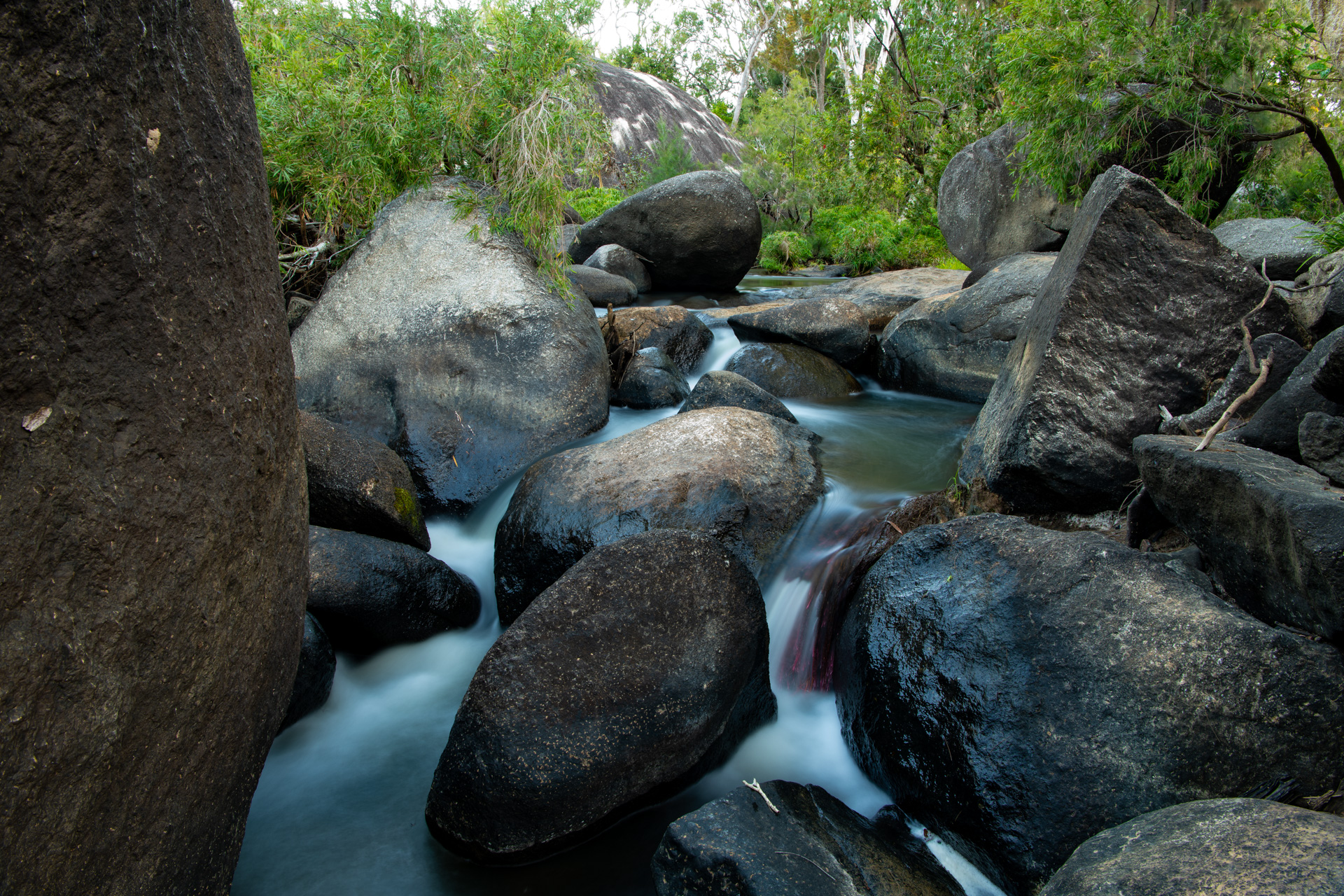|
|
Substrate grain sizeSubstrate grain size categorises the size of unconsolidated substrates by their diameter (regardless of composition). Substrate grain sizes are influenced by energy magnitude, the processes of erosion, deposition, and their source material's physical and chemical processes (i.e. lithology). In the field, substrate sediments usually occur as a mixture of grain sizes[1][3][4]. Soil texture refers to and can be described as the proportion of sand, silt and clay sized particles that make up the mineral fraction of the soil. Quick facts
Unconsolidated sediments consist of boulders, cobbles, pebbles, sands, silts and clays (mud) all of which form part of the rock cycle when rocks are broken down into fragments of different grain sizes. Grain size is also a characteristic of sedimentary rocks, originally formed from unconsolidated sediments when they are transported, buried in successive layers and then lithified as rock[2]. The constituents and characteristics of unconsolidated sediment, such as their mineralogy, and more information about unconsolidated land zones are available in the Substrate Composition page. The grain size of unconsolidated substrates is important for several reasons including, the ability of water to move through or remain within the substrate (e.g. sea-water, ground-water), the retention of organic matter, and to support burrowing organisms and their food sources. Grain size affects the permeability and drainage of intertidal unconsolidated substrates, for example gravelly and sandy soils drain quicker than the finer-grained muds, clays and silts. The minerals in clay (e.g. kaolinite) enable particles to stick together[2], enabling burrowing animals to create holes that persist long enough to provide sheltering space. Some clay minerals absorb water, swelling and expanding into a more compact matrix. To manage sediments it is important to understand their origin and movements. Physical and chemical erosion and weathering processes break down rocks into unconsolidated sediments. Individual substrate particles are also known as clasts. Clasts can have different shapes, ranging from rounded to angular along different axes. Clasts can be abraded during transport, losing their angularity[4]. While the attribute of substrate grain size describes the size of clasts, the shape or dimension of clasts is described by the proportions of each axis, equant (i.e. equal in all dimensions), rod (longer than wide), disc and blade[2]. The packing of the grains and their alignment or stacking is known as imbrication[2]. The texture of soil is important because it influences the amount of water the soil can hold, the rate of water movement through the soil and how workable and fertile the soil is. LinksSubstrate grain size (Intertidal and Subtidal) Soil texture - Queensland Government References
Last updated: 18 October 2023 This page should be cited as: Department of Environment, Science and Innovation, Queensland (2023) Substrate grain size, WetlandInfo website, accessed 8 May 2025. Available at: https://wetlandinfo.des.qld.gov.au/wetlands/ecology/components/substrate/substrate-grain-size/ |

 — Department of the Environment, Tourism, Science and Innovation
— Department of the Environment, Tourism, Science and Innovation


